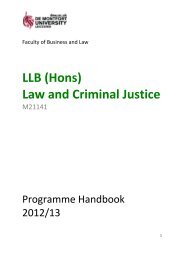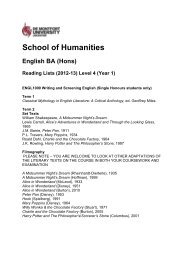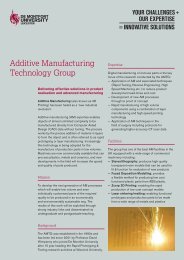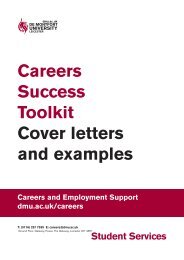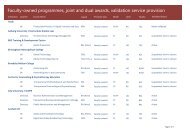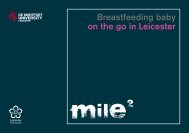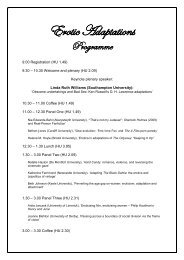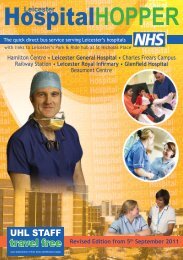Evaluation of the Crash Course March 2009 - De Montfort University
Evaluation of the Crash Course March 2009 - De Montfort University
Evaluation of the Crash Course March 2009 - De Montfort University
You also want an ePaper? Increase the reach of your titles
YUMPU automatically turns print PDFs into web optimized ePapers that Google loves.
In <strong>the</strong> comparison <strong>of</strong> those who received <strong>the</strong> course with those who did not, those<br />
who had seen <strong>the</strong> presentation were significantly more likely to view “Always wearing<br />
a seatbelt” as acceptable (p=0.034) and also to think that “reading a text quickly<br />
while driving” was “stupid” (p=0.001).<br />
The qualitative evidence from <strong>the</strong> focus groups confirmed that virtually all <strong>the</strong> young<br />
people felt <strong>the</strong>y had gained from <strong>the</strong> course, had a greater awareness <strong>of</strong> risks on <strong>the</strong><br />
road and an increased knowledge about how <strong>the</strong>y might be able to stay safe.<br />
Does <strong>the</strong> course have a positive effect on <strong>the</strong> participants’ intentions to drive safely<br />
in future?<br />
409 young people completed <strong>the</strong> free text question about how <strong>the</strong>y now wished to<br />
behave in future. By far <strong>the</strong> greatest number <strong>of</strong> responses indicated an intention to<br />
wear a seat belt in future (253 or 62% <strong>of</strong> those responding to <strong>the</strong> question). There is<br />
little doubt that this message is absorbed by a considerable proportion <strong>of</strong> <strong>the</strong><br />
participants. A number also indicated that <strong>the</strong>y would press o<strong>the</strong>rs to do so as well.<br />
After that <strong>the</strong> most numerous answers concerned <strong>the</strong> resolution not to distract a<br />
driver and an intention to tell o<strong>the</strong>r drivers to reduce <strong>the</strong>ir speed or to drive more<br />
slowly when <strong>the</strong>y became drivers <strong>the</strong>mselves. O<strong>the</strong>r responses showed an intention<br />
not to drink and drive or go with an intoxicated driver with a small number <strong>of</strong> o<strong>the</strong>r<br />
safety issues mentioned.<br />
The young people’s comments in <strong>the</strong> focus groups confirmed <strong>the</strong> finding that <strong>the</strong><br />
course does have a positive effect on intended behaviour, with respondents being<br />
able to illustrate how <strong>the</strong>y now wanted to behave as drivers.<br />
Is <strong>the</strong>re any evidence <strong>of</strong> behaviour change as a result <strong>of</strong> <strong>the</strong> course?<br />
The survey compared <strong>the</strong> self reported behaviour over <strong>the</strong> previous month for those<br />
who had attended <strong>the</strong> course and those who had not. A positive statistically<br />
significant difference was found in <strong>the</strong> self reports <strong>of</strong> those who had attended <strong>the</strong><br />
course in respect <strong>of</strong> how frequently <strong>the</strong>y had “messed” about in a car, potentially<br />
distracting <strong>the</strong> driver (p





